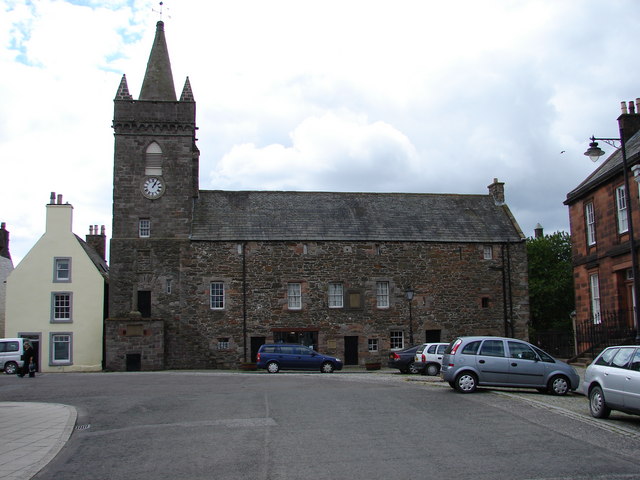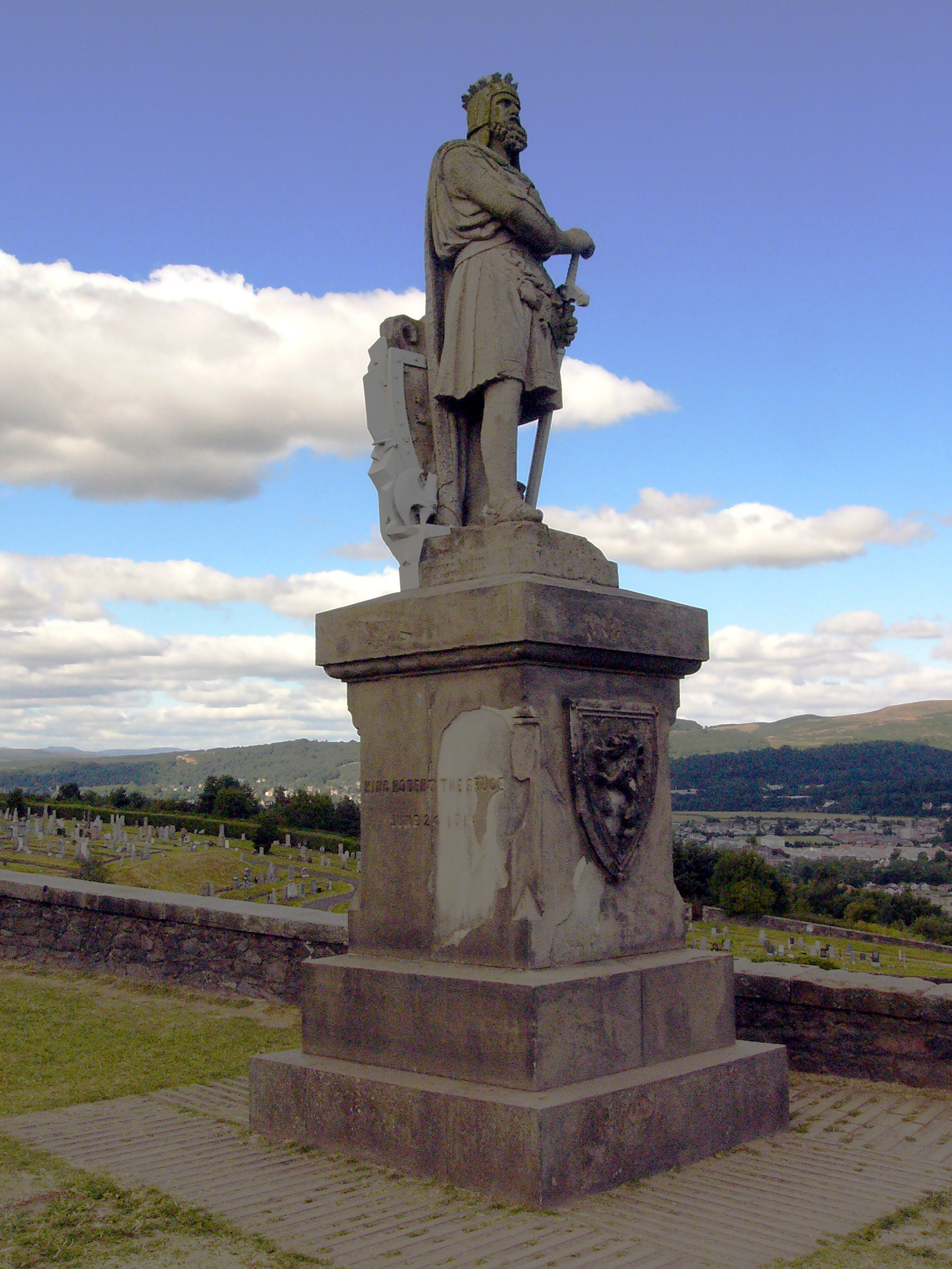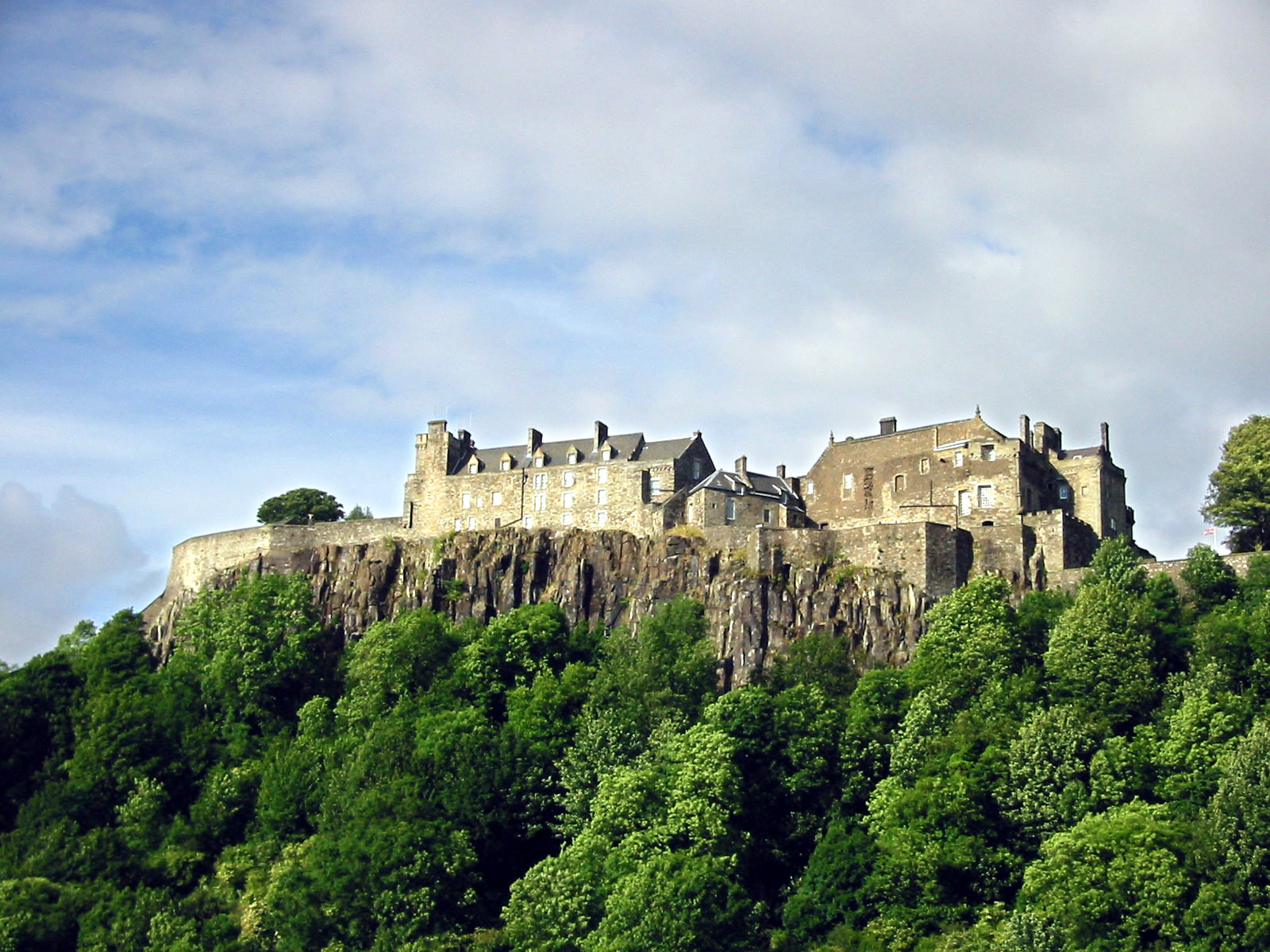|
Robert Maxwell, 5th Lord Maxwell
Robert Maxwell, 5th Lord Maxwell (1493 – 9 July 1546) was a member of the Council of Regency (1536) of the Kingdom of Scotland, Regent of the Isle of Arran and like his father before him patriarch of the House of Maxwell/Clan Maxwell. A distinguished Scottish nobleman, politician, soldier and in 1513 Lord High Admiral of Scotland, Lord High Admiral, Lord Maxwell was a member of James V of Scotland's royal council and served as Lord Provost of Edinburgh in 1524, 1527 and 1535. He was also an Extraordinary Lord of Session in 1533. In 1537, he was one of the ambassadors sent to the French Court to negotiate the marriage of James to Mary of Guise, whom he espoused as proxy for the King. Life Robert was the eldest son of John Maxwell, 4th Lord Maxwell (killed at the Battle of Flodden, 9 September 1513) and Agnes Stewart, the daughter of Sir Alexander Stewart of Garlies. After the battle of Flodden, Robert returned as heir to his father on 4 November 1513. Around this time, he was als ... [...More Info...] [...Related Items...] OR: [Wikipedia] [Google] [Baidu] [Amazon] |
Council Of Regency
In a monarchy, a regent () is a person appointed to govern a state because the actual monarch is a minor, absent, incapacitated or unable to discharge their powers and duties, or the Interregnum, throne is vacant and a new monarch has not yet been determined. The rule of a regent or regents is called a regency. A regent or regency council may be formed ''ad hoc'' or in accordance with a constitutional rule. ''Regent'' is sometimes a formal title granted to a monarch's most trusted advisor or personal assistant. If the regent is holding the position due to their being in the Order of succession, line of succession, the compound term ''prince regent'' is often used; if the regent of a minor is their mother, and she is wife or Queen dowager, widow of the king, she would be referred to as ''queen regent''. If the formally appointed regent is unavailable or cannot serve on a temporary basis, a may be appointed to fill the gap. In a monarchy, a regent usually governs due to one ... [...More Info...] [...Related Items...] OR: [Wikipedia] [Google] [Baidu] [Amazon] |
Kirkcudbright
Kirkcudbright ( ; ) is a town at the mouth of the River Dee, Galloway, River Dee in Dumfries and Galloway, Scotland, southwest of Castle Douglas and Dalbeattie. A former royal burgh, it is the traditional county town of Kirkcudbrightshire. History An early rendition of the name of the town was Kilcudbrit; this derives from the Scottish Gaelic, Gaelic ''Cille Chuithbeirt'' meaning "chapel of Cuthbert", the saint whose mortal remains were kept at the town between their exhumation at Lindisfarne and reinterment at Chester-le-Street. John Spottiswoode, in his account of religious houses in Scotland, mentions that the Franciscans, or Grey Friars, had been established at Kirkcudbright from the 12th century. John I de Balliol, John Balliol was in possession of the ancient castle at Castledykes in the late 13th century and Edward I of England is said to have stayed here in 1300 during his war against Scotland. In 1455 Kirkcudbright became a royal burgh. About a century later, the mag ... [...More Info...] [...Related Items...] OR: [Wikipedia] [Google] [Baidu] [Amazon] |
Stirling Castle
Stirling Castle, located in Stirling, is one of the largest and most historically and architecturally important castles in Scotland. The castle sits atop an Intrusive rock, intrusive Crag and tail, crag, which forms part of the Stirling Sill geological formation. It is surrounded on three sides by steep cliffs, giving it a strong defensive position. Its strategic location, guarding what was, until the 1890s, the lowest bridging point, farthest downstream crossing of the River Forth, has made it an important fortification in the region from the earliest times. Most of the principal buildings of the castle date from the fifteenth and sixteenth centuries. A few structures remain from the fourteenth century, while the outer defences fronting the town date from the early eighteenth century. Before the union with England, Stirling Castle was also one of the most used of the many Scottish royal residences, very much a palace as well as a fortress. Several List of Scottish monarchs, Sc ... [...More Info...] [...Related Items...] OR: [Wikipedia] [Google] [Baidu] [Amazon] |
Falkland Palace
Falkland Palace, in Falkland, Fife, Scotland, is a royal palace of the Scottish kings. It was one of the favourite places of Mary, Queen of Scots, who took refuge there from political and religious turmoil of her times. Today it is under the stewardship of Ninian Stuart, who delegates most of his duties to the National Trust for Scotland. The Chapel Royal in the Palace is dedicated to Thomas the Apostle. It is open to the public and reserved for Catholic worship. History Early years In the late 12th century, a royal hunting lodge was located on this site. The lodge was expanded in the 13th century to operate as a castle, owned by the Earls of Fife of the noted Clan MacDuff. The castle was built here because the site is on a slight hill that could be defended. The surrounding land eventually were developed as the Palace gardens. To the north, between the royal stable and the River Eden, was a great oak wood. Its many groves merged into the surrounding parkland. Timb ... [...More Info...] [...Related Items...] OR: [Wikipedia] [Google] [Baidu] [Amazon] |
Walter Scott Of Branxholme And Buccleuch
Sir Walter Scott, 1st of Branxholme, 3rd of Buccleuch (c. 1495 – killed 4 October 1552), known as "Wicked Wat", was a nobleman of the Scottish Borders and the chief of Clan Scott who briefly served as Warden of the Marches, Warden of the Middle March He was an "inveterate English hater"MacDonald Fraser, p. 92 active in the wars known as The Rough Wooing and a noted Border Reivers, Border reiver. He was killed on Royal Mile, Edinburgh High Street in a feud with Clan Kerr in 1552. His great-grandson was Sir Walter Scott, 1st Lord Scott of Buccleuch, the "Bold Buccleuch" (1565–1611), a border reiver famed for his role in the rescue of Kinmont Willie Armstrong. Early life Walter Scott was the son of Sir Walter Scott of Buccleuch, Scottish Borders, Buccleuch, 2nd of Buccleuch, and Elizabeth Kerr, daughter of Walter Kerr of Cessford Castle, Cessford. The elder Sir Walter succeeded his grandfather, David Scott, 1st of Buccleuch, as baron of Branxholme Castle, Branxholme in 1492 and ... [...More Info...] [...Related Items...] OR: [Wikipedia] [Google] [Baidu] [Amazon] |
Battle Of Melrose
The Battle of Melrose was a Scottish clan battle that took place on 25 July 1526.Battle of Melrose melrose.bordernet.co.uk. Retrieved 31 August 2014. Walter Scott of Branxholme and Buccleuch attempted to rescue the young James V of Scotland from the powerful Archibald Douglas, 6th Earl of Angus. Background Guardianship of the young[...More Info...] [...Related Items...] OR: [Wikipedia] [Google] [Baidu] [Amazon] |
Lord Provost
A lord provost () is the convenor of the local authority, the civic head and the lord-lieutenant of one of the principal cities of Scotland. The office is similar to that of a lord mayor. Only the cities of Aberdeen, Dundee, Edinburgh, Stirling and Glasgow have a lord provost; other Scottish local authorities have provosts or convenors, which are similar offices to that of a mayor (as a presiding officer of the local council, not as a chief executive of a local authority). Perth (as a city) previously termed its civil leader a "lord provost", but from the Second World War onwards has preferred the simple term Provost of Perth. A lord provost has a higher status than a lord mayor in other parts of the United Kingdom. They are ex officio the lord-lieutenant for that city, in accordance with section 1 of the Lieutenancies Act 1997, which allows the city council to choose its own representative for the monarch. The lord provosts of Edinburgh and Glasgow enjoy the style of "The ... [...More Info...] [...Related Items...] OR: [Wikipedia] [Google] [Baidu] [Amazon] |
Edinburgh
Edinburgh is the capital city of Scotland and one of its 32 Council areas of Scotland, council areas. The city is located in southeast Scotland and is bounded to the north by the Firth of Forth and to the south by the Pentland Hills. Edinburgh had a population of in , making it the List of towns and cities in Scotland by population, second-most populous city in Scotland and the List of cities in the United Kingdom, seventh-most populous in the United Kingdom. The Functional urban area, wider metropolitan area had a population of 912,490 in the same year. Recognised as the capital of Scotland since at least the 15th century, Edinburgh is the seat of the Scottish Government, the Scottish Parliament, the Courts of Scotland, highest courts in Scotland, and the Palace of Holyroodhouse, the official residence of the Monarchy of the United Kingdom, British monarch in Scotland. It is also the annual venue of the General Assembly of the Church of Scotland. The city has long been a cent ... [...More Info...] [...Related Items...] OR: [Wikipedia] [Google] [Baidu] [Amazon] |
Stirling
Stirling (; ; ) is a City status in the United Kingdom, city in Central Belt, central Scotland, northeast of Glasgow and north-west of Edinburgh. The market town#Scotland, market town, surrounded by rich farmland, grew up connecting the royal Stirling Castle, citadel, the medieval old town with its merchants and tradesmen, the Stirling Old Bridge, Old Bridge and the port. Located on the River Forth, Stirling is the administrative centre for the Stirling (council area), Stirling council area, and is traditionally the county town and historic county of Stirlingshire. Stirling's key position as the lowest bridging point of the River Forth before it broadens towards the Firth of Forth made it a focal point for travel north or south. It has been said that "Stirling, like a huge brooch clasps Scottish Highlands, Highlands and Scottish Lowlands, Lowlands together". The city's status as "Gateway to the Highlands" also historically lent it great strategic importance—the credo "he who ... [...More Info...] [...Related Items...] OR: [Wikipedia] [Google] [Baidu] [Amazon] |
Margaret Tudor
Margaret Tudor (28 November 1489 – 18 October 1541) was List of Scottish royal consorts, Queen of Scotland from 1503 until 1513 by marriage to King James IV. She then served as regent of Scotland during her son's minority, and fought to extend her regency. Margaret was the eldest daughter and second child of King Henry VII of England and Elizabeth of York, and the elder sister of King Henry VIII of England. By her line, the House of Stuart eventually acceded to the throne of Kingdom of England, England and Kingdom of Ireland, Ireland, in addition to Kingdom of Scotland, Scotland. Margaret married James IV at the age of 13, in accordance with the Treaty of Perpetual Peace between England and Scotland. Together, they had six children, though only one of them reached adulthood. Margaret's marriage to James linked the royal houses of England and Scotland, which a century later resulted in the Union of the Crowns. Following the death of James IV at the Battle of Flodden in 1513, M ... [...More Info...] [...Related Items...] OR: [Wikipedia] [Google] [Baidu] [Amazon] |
Archibald Douglas, 6th Earl Of Angus
Archibald Douglas, 6th Earl of Angus (c. 148922 January 1557) was a Scottish nobleman active during the reigns of James V and Mary, Queen of Scots. He was the son of George, Master of Angus, who was killed at the Battle of Flodden, and succeeded as Earl of Angus on the death of his grandfather, Archibald. Through his daughter, Margaret, he was the grandfather of Henry Stuart, Lord Darnley and therefore the great-grandfather of James VI and I. Marriage to Margaret Tudor In 1509, Douglas married Margaret Hepburn, daughter of the Earl of Bothwell. After her death, and that of his father, in 1513, on 6 August 1514 the new Earl of Angus married the dowager queen and regent, Margaret Tudor, widow of James IV, mother of two-year-old James V, and elder sister of Henry VIII of England. The marriage stirred up the jealousy of the nobles and the opposition of the faction supporting French influence in Scotland. Civil war broke out, and Margaret lost the regency to John Stewart, Duk ... [...More Info...] [...Related Items...] OR: [Wikipedia] [Google] [Baidu] [Amazon] |
Warden Of The Marches
The Lord Warden of the Marches was an office in the governments of Scotland and England. The holders were responsible for the security of the border between the two nations, and often took part in military action. They were also responsible, along with Conservators of the Truce, for administering the special type of border law known as March law. The Marches on both sides of the border were traditionally split into West, Middle, and East, each with their own warden answerable to the Lord Warden-general. The English Western March was based on Carlisle and the Eastern March on Berwick-upon-Tweed. The offices became unnecessary after the union of the crowns of England and Scotland under King James in 1603. For England Warden of the Marches * Robert de Clifford (1297–) (died 1314) * John de Warenne, 7th Earl of Surrey (1327–) * Henry de Percy, 2nd Baron Percy (1328–) * Ralph Neville, 2nd Baron Neville de Raby and Henry de Percy, 2nd Baron Percy (1334–) (jointly) * Gi ... [...More Info...] [...Related Items...] OR: [Wikipedia] [Google] [Baidu] [Amazon] |







